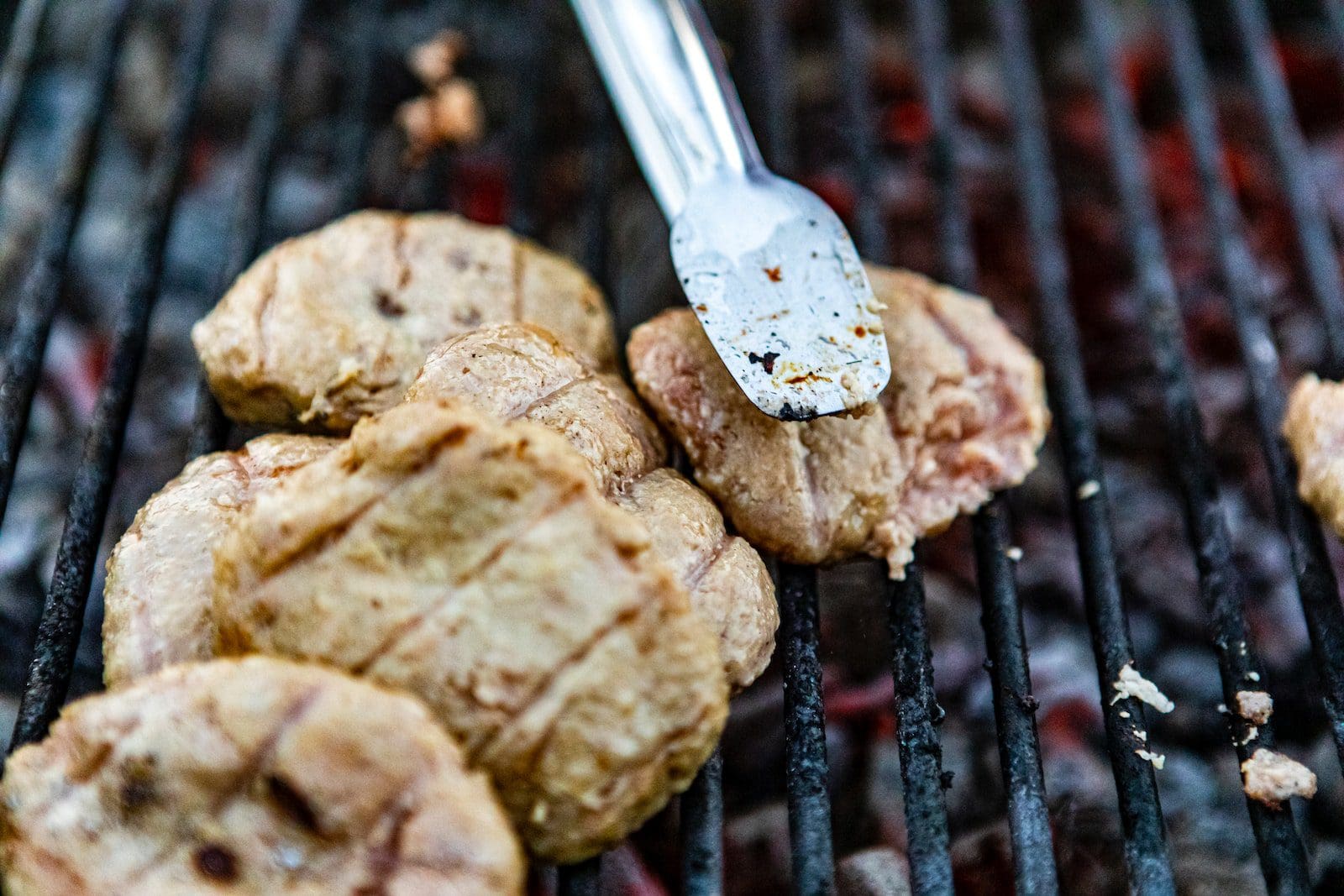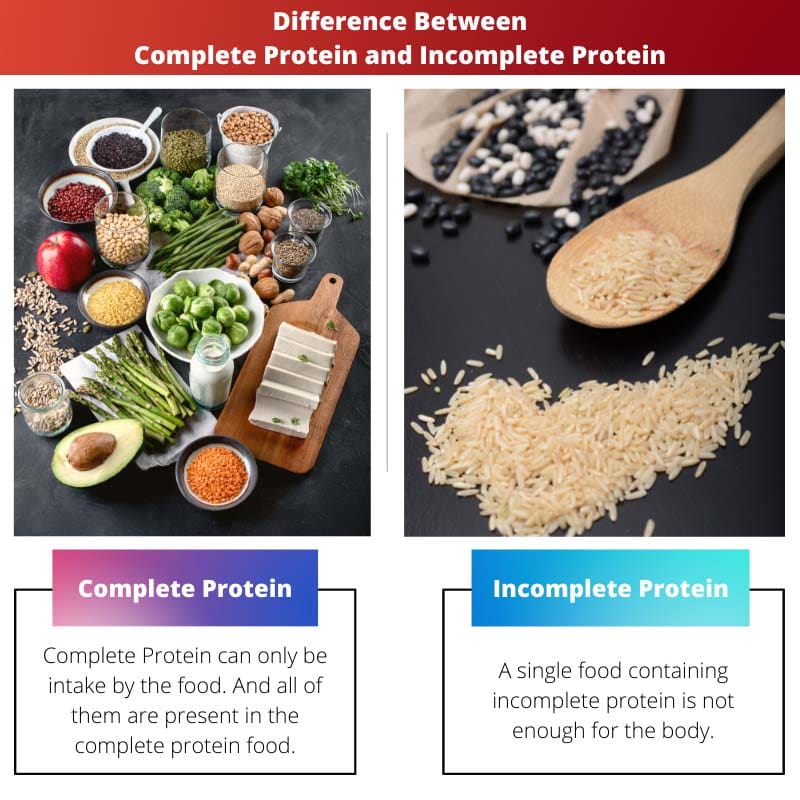Protein is very important for our diet; it contributes to the overall development of the body. Every protein has a unique shape, size, and length as it is made up of amino acid, and amino acid has several types and varieties.
Therefore they can be categorised on the basis of types of amino acids and also on their chemical structure.
But to intake the protein, we must understand the food which contains complete and incomplete protein. Only then can you understand the combination of food you should intake to make a healthy balance of protein. Neither excess nor lack of any type of protein is good for the body.
Key Takeaways
- Complete proteins contain all nine essential amino acids, while incomplete proteins lack one or more.
- Animal-based foods like meat, poultry, fish, eggs, and dairy provide complete proteins, whereas most plant-based sources offer incomplete proteins.
- Combining different plant-based foods, such as legumes and grains, can create a meal with complete protein coverage.
Complete Protein vs Incomplete Protein
A food is a complete protein when it contains an adequate proportion of all nine essential amino acids that our body can’t produce on its own and are important for its daily functions to run smoothly. An incomplete protein contains some of the essential amino acids in various amounts but not all.

A protein with all nine essential types of amino acids in it is known as a complete protein. Animal and animal products such as meat and chicken are rich in this type of protein.
Milk is also a great source of this type of protein. They fulfil all the requirements of protein in our body, and therefore no extra protein is required if you’re intaking the complete protein-rich food.
Proteins that do not have all the required nine amino acids in them are called incomplete proteins. They are mostly found in plant products such as vegetables and fruits.
Combinations of incomplete protein-rich food are required to fulfil the requirement of protein in the body. This is mostly preferred by people who are vegan and vegetarian.
Comparison Table
| Parameters of Comparison | Complete Protein | Incomplete Protein |
|---|---|---|
| Amino acids | Contains all amino acids | Do not contain all amino acids |
| Found in | Animals | Plants |
| Health benefits | Have more health benefits | Fewer health benefits |
| Sources | Eggs, fish, meat, chicken, etc | Grains, peas, nuts, etc |
| Preferred | Less preferred | More preferred |
What is Complete Protein?
Complete proteins are those with all types of amino acids present in them. Well, most of them were made inside the body itself, but 9 types are not, which can only be intake by food.
And all of them are present in the complete protein food. They are:
- Tryptophan
- Threonine
- Isoleucine
- Lysine
- Leucine
- Methionine plus Cristine
- Phenylalanine plus Tyrosine
- Valine
- Histidine
This type of protein is found in ammonals such as fish, meat, chicken, etc. not many vegetables have complete protein, but some do have it, including soybean and many more.
And the best example of this protein is milk which can be easily digested and have the maximum protein content in it. We all know how important protein is important for the body’s proper functioning.
For example, for mass gain, complete protein food is the best source as they contribute the most to building the mass of the body.
Except for them, they also have some essential functions, including building up tissues and immune system, improving sleep, etc., except these have mostly disadvantages such as if there is a lack of protein in the body, only complete protein can help it to maintain the balance.

What is Incomplete Protein?
These are the type of protein that does not have all the essential amino acids in them. They are not very beneficial to the body as compared to the complete protein. A single food containing incomplete protein is not enough for the body.
The combination of food with different types of amino acids or incomplete protein can fill the need for protein in the body. A few examples of such combinations are:
- Corn with beans
- Yogurt with walnuts
- Brown rice with green peas
- Nuts with legumes
- Legumes with seeds
This type of protein is founded in vegetable and plant products such as pulses, grains, etc.
The main and only advantage it has is that not all people eat animal products or animals in general (for example, vegetarian and vegan); therefore, they can eat an incomplete protein food, which is plants and vegetables.
Also, a recent study has shown that incomplete protein can also help in gaining mass or weight.

Main Differences Between Complete Protein and Incomplete Protein
- The main difference between a complete protein and an incomplete protein is the types and number of amino acids it contains, while as the name suggests, a complete protein has all nine essential amino acids in it, incomplete proteins do not have all essential amino acids in it, that is required by the body.
- Complete proteins are mainly found in animals or their products, while most vegetables and their products have incomplete proteins in them.
- As mentioned above, complete protein has all the essential amino acids. Therefore, it has more health benefits, such as gaining mass, protein from animal-sourced food is recommended while incomplete proteins do have some benefits, but in comparison, they do not provide much development in the body as complete proteins.
- Also, a single food containing complete protein is enough for the body, while combinations of different food containing incomplete protein are required to fulfil the requirement of protein in our body.
- As the main source of complete protein is animals, vegetarian and vegan people avoid them, and hence they are less proffered in comparison to plant food with incomplete protein.
- Foods that contain complete protein are meat, chicken, fish, etc., and foods containing incomplete protein are grains, nuts, peas, etc.

- https://www.nature.com/articles/nchem.2785?muraadminpreview&muraadminpreview&mobileformat=false
- https://www.nature.com/articles/323734a0
- https://www.worldscientific.com/doi/abs/10.1142/9789812799623_0039

The detailed descriptions of amino acids and their presence in complete proteins are enlightening. This knowledge showcases the crucial role of complete proteins in overall health and nutrition.
Understanding the components of complete proteins provides valuable insights into their significance for a balanced diet.
The information provided about plant-based sources and animal-based sources offers a comprehensive understanding of dietary options. This knowledge is beneficial for individuals with varied nutritional needs.
Absolutely, the information on diverse protein sources is essential for addressing different dietary preferences and requirements.
Recognizing the importance of complete and incomplete proteins is pertinent to dietary planning. This knowledge empowers individuals to make informed choices about their nutritional intake.
I think many individuals can benefit from this detailed understanding of protein types and sources.
You have explained the concept of protein very well. It is crucial to understand the types and sources of protein to obtain the right nutrition. This information is essential for everyone to know.
Yes, every person should know which sources provide complete or incomplete proteins. This knowledge can help in maintaining a balanced diet.
The comparison table effectively highlights the differences between complete and incomplete proteins. It’s critical to acknowledge these disparities to make informed dietary choices.
Agreed, understanding these differences is crucial for plant-based or animal-based diets.
The table simplifies complex information and enables us to make informed decisions about protein consumption.
The distinction between complete and incomplete proteins is well-described. It’s crucial to understand the benefits and limitations of each protein type.
Agreed, this understanding is essential for making well-informed dietary and nutritional decisions.
The detailed information provides valuable knowledge for individuals seeking optimal nutrition through protein consumption.
The examples of combinations for incomplete proteins are valuable insights. They offer practical options for individuals following a plant-based diet.
The variety of combinations for incomplete proteins allows for diversified and balanced nutrition for different dietary needs.
Absolutely, these combinations provide essential protein sources for individuals with specific dietary preferences.
I appreciate the detailed breakdown of complete and incomplete proteins. It’s important to recognize how they contribute to overall health and well-being.
Absolutely, this knowledge can guide individuals in achieving a balanced diet and optimal nutrition.
The information about the essential amino acids in complete proteins is enlightening. It emphasizes their significance in food consumption and health.
Understanding the amino acid composition of proteins is fundamental to dietary practices and nutrition.
Agreed, it’s essential to comprehend how complete proteins fulfill crucial nutritional requirements.
The information on the advantages and disadvantages of complete proteins is well-detailed. It provides a comprehensive perspective on their implications for dietary health.
Understanding the various aspects of complete proteins can guide individuals in making dietary choices that support overall well-being.